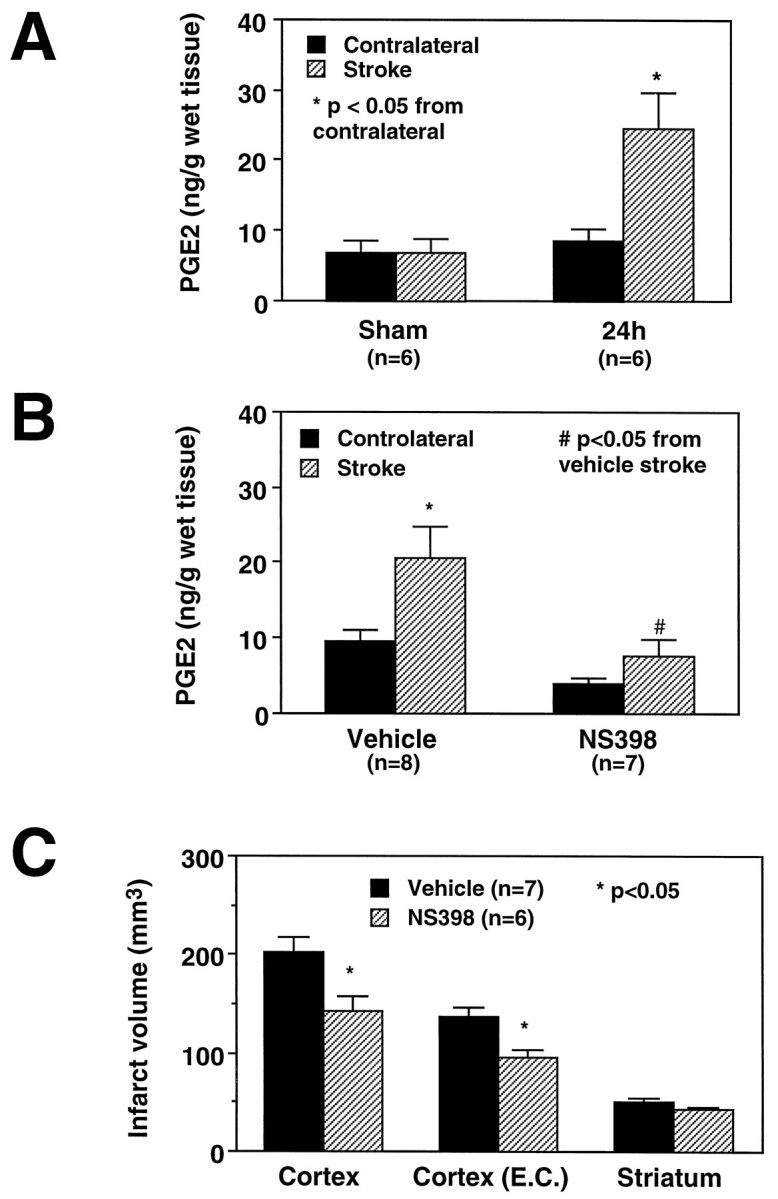Fig. 5.

A, Effect of transient MCA occlusion on (PGE2) in the postischemic brain. In sham-operated rats, low levels of PGE2 are present in the brain. Cerebral ischemia increases PGE2 concentration 24 hr after stroke only on the ischemic side (p < 0.05, t test; n = 6).B, Effect of the COX-2 inhibitor NS-398 on postischemic increase in PGE2 in the injured brain. NS-398 (20 mg/kg, i.p.) was administered starting 6 hr after transient MCA occlusion. Rats were killed 24 hr after ischemia. At the time of death, the rats had received three doses. NS-398 attenuates the postischemic increases in PGE2 (p < 0.05 from vehicle; ANOVA and Tukey’s test). The residual increase in PGE2after NS-398 did not reach statistical significance (p > 0.05). NS-398 slightly reduced resting levels of PGE2 in the cerebral cortex contralateral to the stroke. However, such reduction did not reach statistical significance (p > 0.05). C, Effect of NS-398 on the volume of the infarct produced by transient MCA occlusion in the rat. Rats were treated for 3 d (20 mg/kg, i.p., twice per day) starting 6 hr after induction of ischemia. NS-398 reduced the volume of the infarct in the cerebral cortex but not in the striatum. The reduction in infarct volume persists after correction for ischemic swelling [Cortex (E.C.)], suggesting that the reduction in the lesion volume is not attributable to an effect of NS-398 on ischemic edema.
